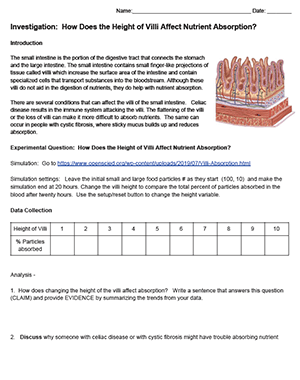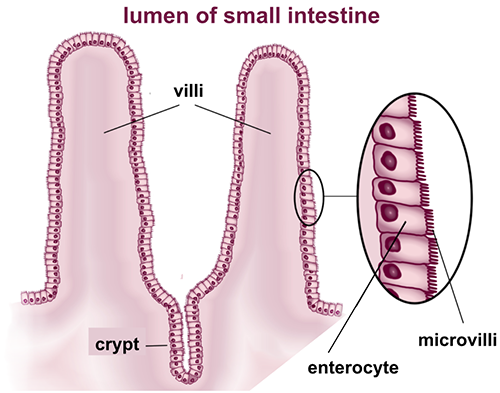
The small intestine is the portion of the digestive tract that connects the stomach and the large intestine. The small intestine contains small finger-like projections of tissue called villi which increase the surface area of the intestine and contain specialized cells that transport substances into the bloodstream. Although these villi do not aid in the digestion of nutrients, they do help with nutrient absorption.
There are several conditions that can affect the villi of the small intestine. Celiac disease results in the immune system attacking the villi.
The flattening of the villi or the loss of villi can make it more difficult to absorb nutrients. The same can occur in people with cystic fibrosis, where sticky mucus builds up and reduces absorption.
This lab uses a Netlogo simulation to observe how different heights of villi within the intestine affects absorption rate. Students can manipulate variables like size of food particles, and villi height.

Students then complete a data table in the worksheet and write a CLAIM and EVIDENCE statement for what was observed.
Grade Level: 9-12
Time Required: 20-30 minutes

